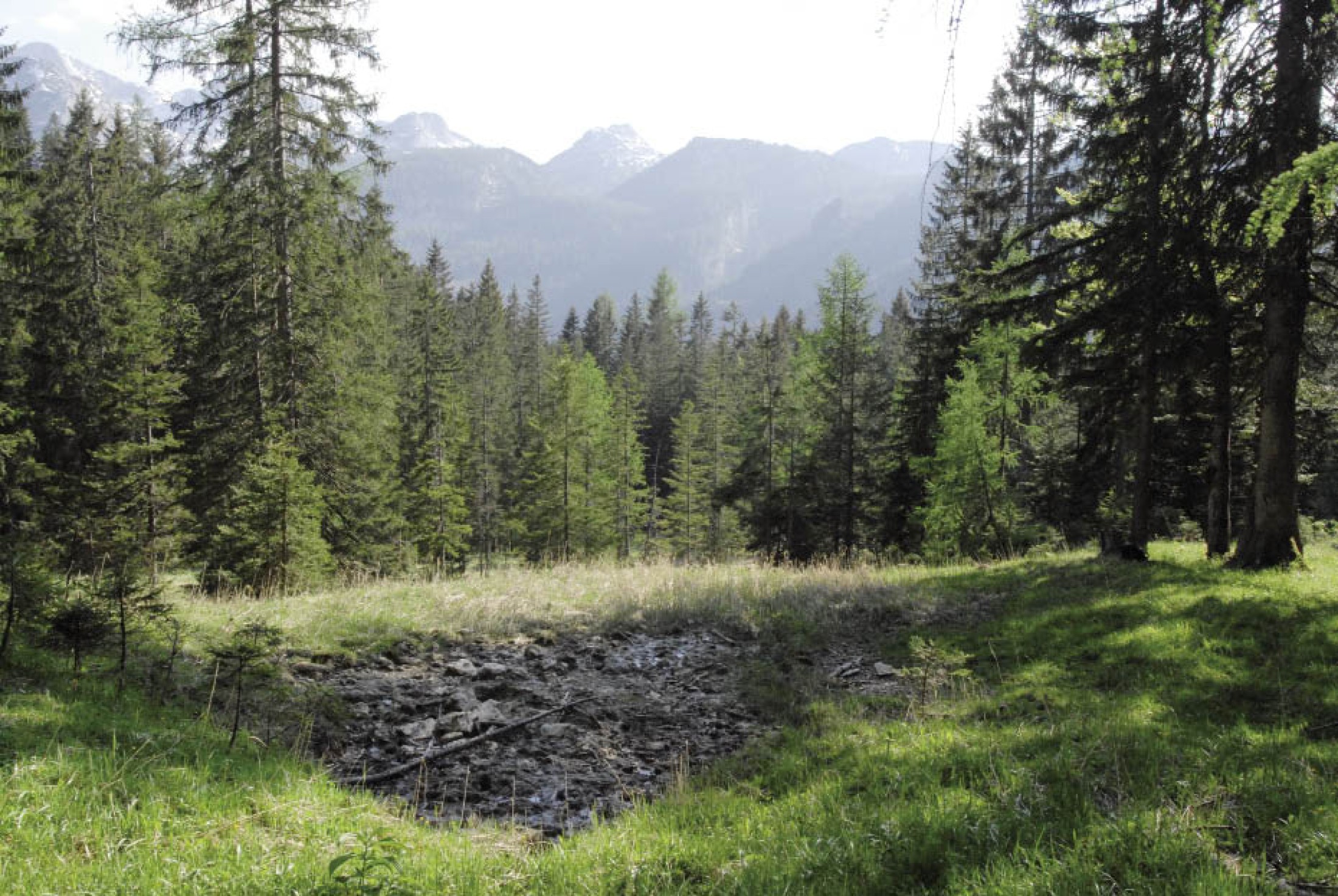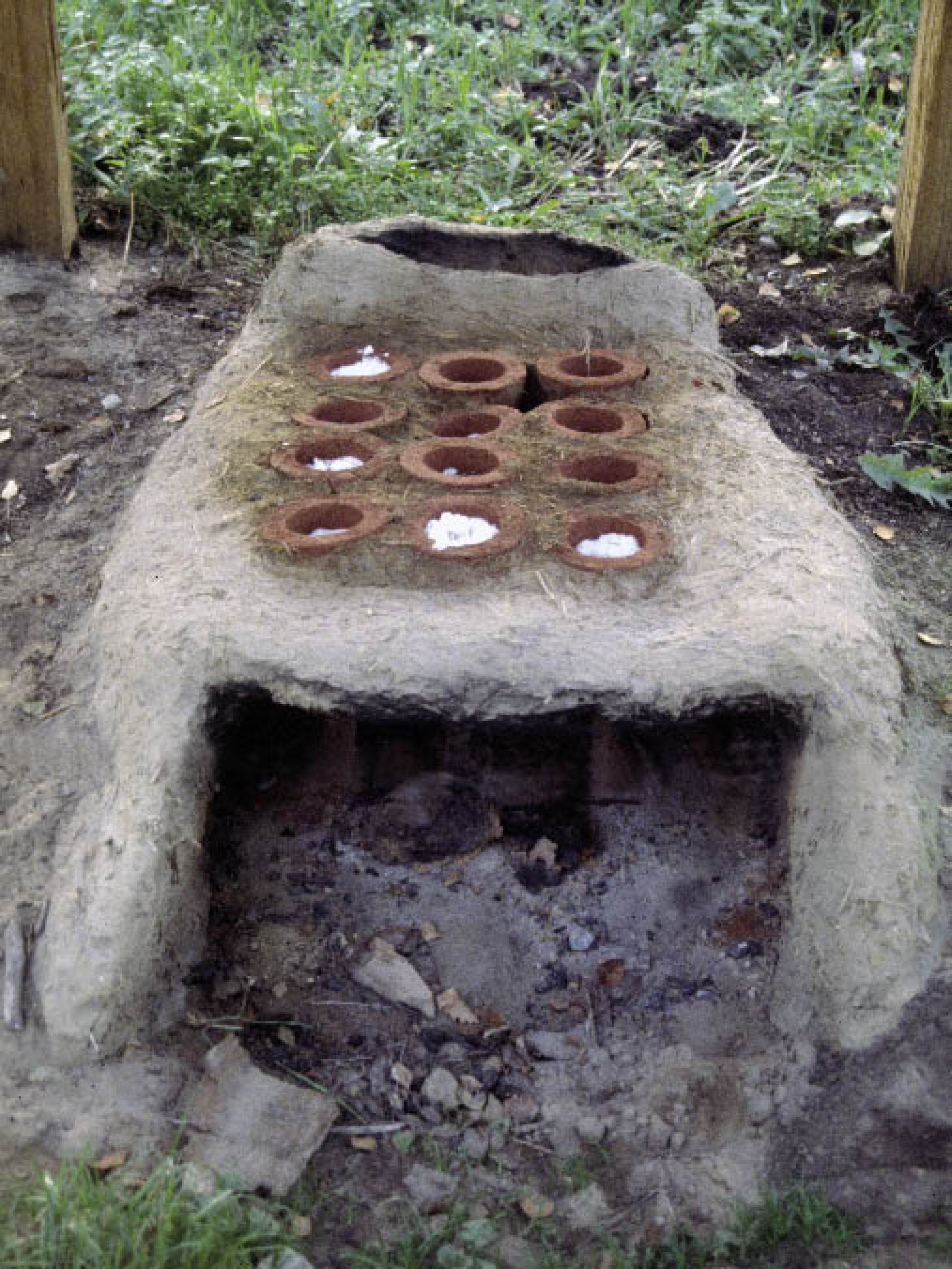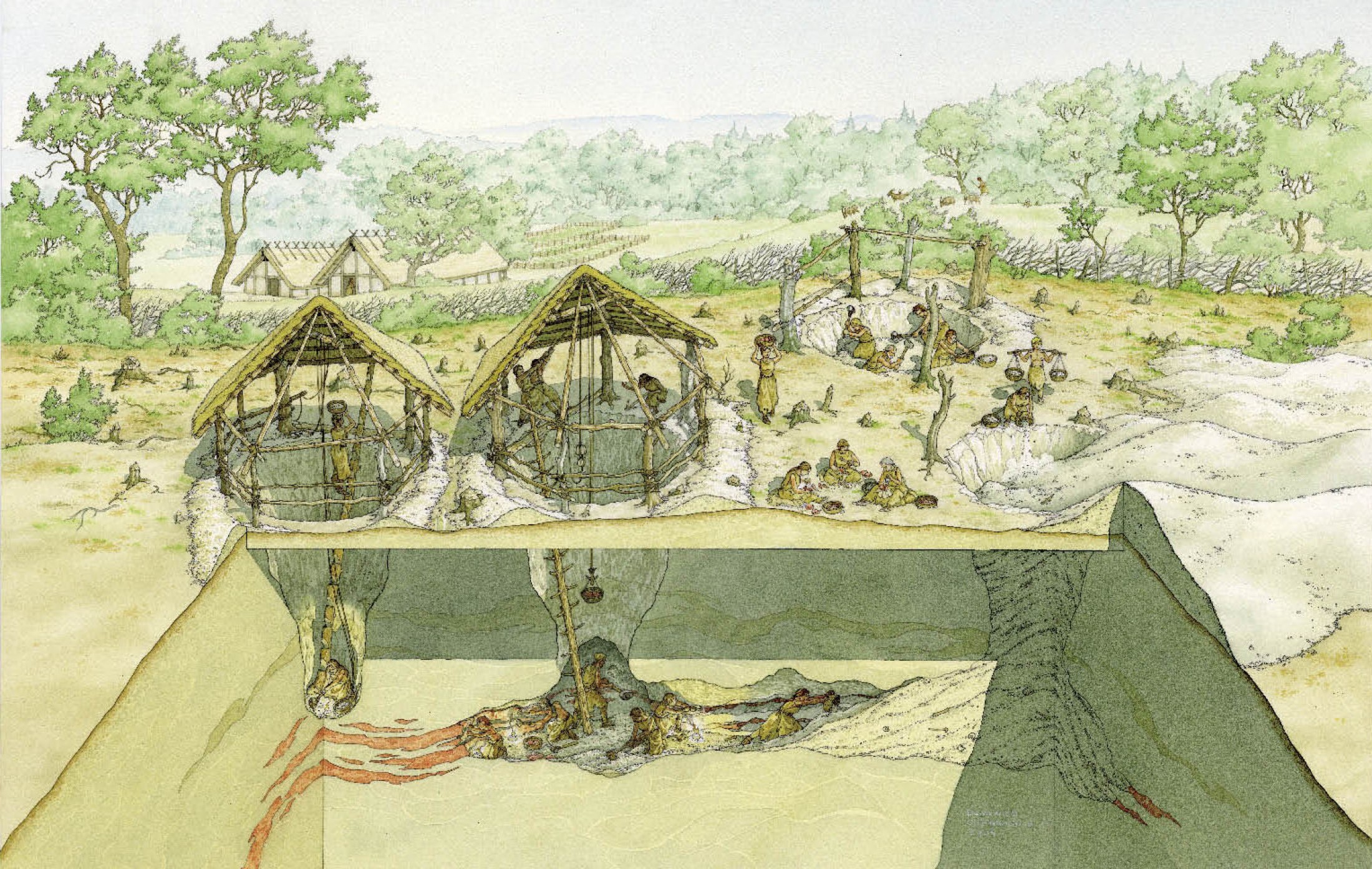Early salt production in Hallstatt
It can be assumed that humans have used the salt contained in Hallstatt’s brine sources since they first settled in the region.With the present state of knowledge, it is not possible to tell when salt extraction from brine gave way to direct salt mining underground. An antler pick used about 5000 BC in the Hallstatt High Valley might indicate mining activities, and we know that in neighbouring Bavaria extensive flint mines were indeed operating by this time.
Use of the brine sources
The briquetage technique
Ethno-archaeological considerations
Evidence of early mining in Hallstatt
Use of the brine sources
The origins of salt mining in Hallstatt remain unknown: – not only the 'when', but the 'how' as well. What was the technique used to work salt for the first time in the salt High Valley? The only prehistoric technique directly evidenced at Hallstatt is sub-surface salt mining. Yet, archaeologists assume that salt was first extracted from natural brine at the surface. The rock salt worked underground from the Bronze Age onwards is covered by a 30m thick salt-free layer of rock and earth, and is therefore difficult to access, whereas saline springs naturally emerge on the surface. There are various ways of extracting salt from brine.The briquetage technique
The oldest known salt production sites in Europe, where salt was extracted from saline springs, can be traced back to the 6th millennium BC. It is also possible to extract salt from brine without using vessels. In a technique known from Papua New Guinea where, instead of pottery vessels, certain plants are immersed in brine basins over night. Their large pores absorb the saline water. They are then burnt, the water evaporates and the salt crystallizes in the pores. The salt crystals are then picked from the ashes, rehumidified and pressed into to salt cakes. Since this technique leaves only ash as a residue, it is nearely impossible to identify archaeologically. A technique widely known in Europe is the evaporation technique which leaves characteristic 'red hills' or briquetage – the broken remains of the single-use terracotta evaporation vessels. When all the water has evaporated, the earthenware pans are broken to recover the salt tiles. The characteristic residues that are left for archaeologists take the form of potsherds and vitrified soil. The oldest known salt production sites in Europe, where salt was extracted from saline springs, can be traced back to the 6th millennium BC. It is also possible to extract salt from brine without using vessels.Ethno-archaeological considerations
In a technique known from Papua New Guinea where, instead of pottery vessels, certain plants are immersed in brine basins over night. Their large pores absorb the saline water. They are then burnt, the water evaporates and the salt crystallizes in the pores. The salt crystals are then picked from the ashes, rehumidified and pressed into to salt cakes. Since this technique leaves only ash as a residue, it is nearely impossible to identify archaeologically.Evidence of early mining in Hallstatt
It is not yet clear when the transition from presumed salt extraction from brine springs to actual salt mining took place in Hallstatt. The 7000-year old antler pick might indicate underground mining; but it might equally have been used to open up a salt spring. It is, however, known that Neolithic people possessed impressive mining expertise, as evidenced by extensive flint working mineshafts in Bavaria and elsewhere.(Reschreiter, H. – Kowarik, K.)




